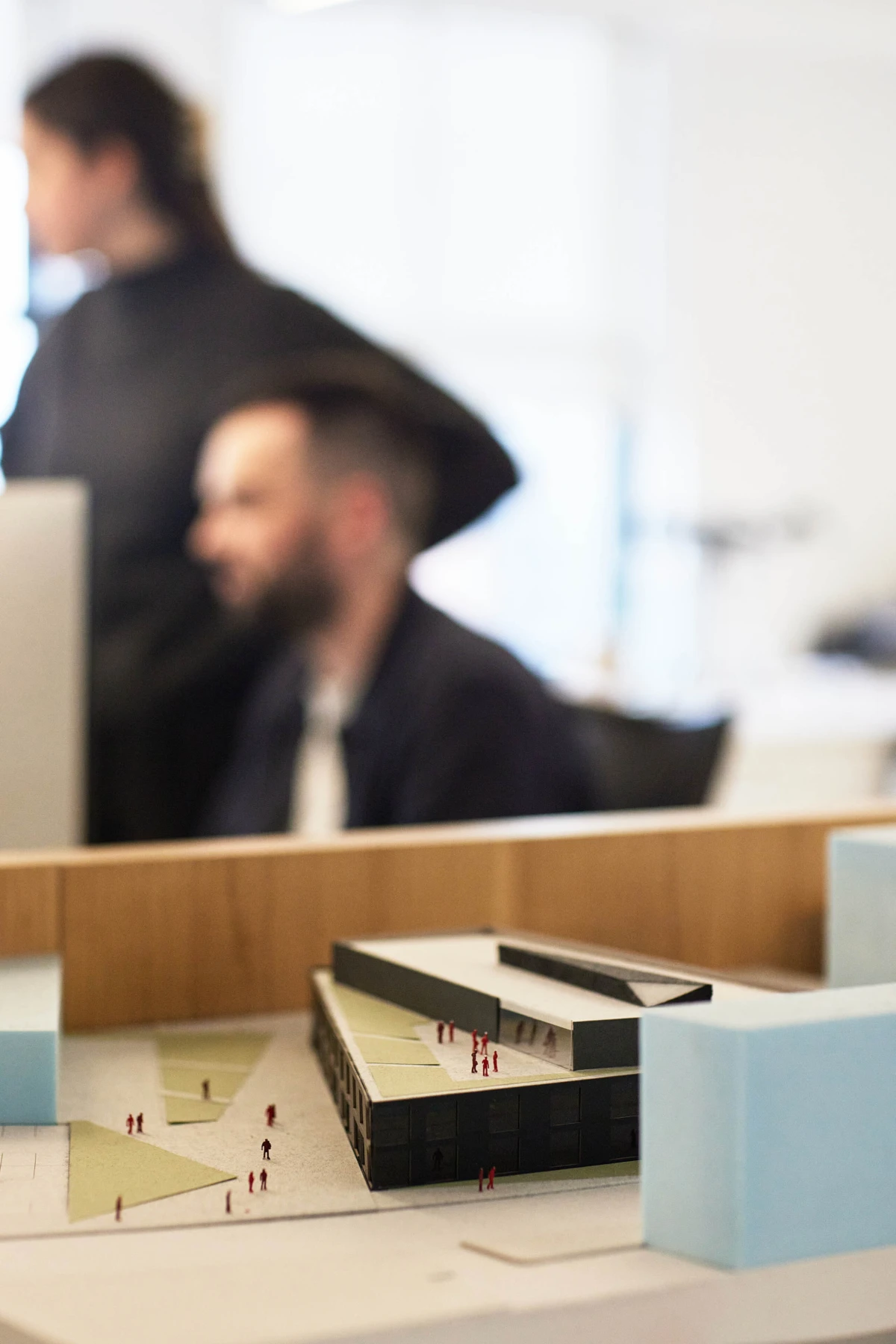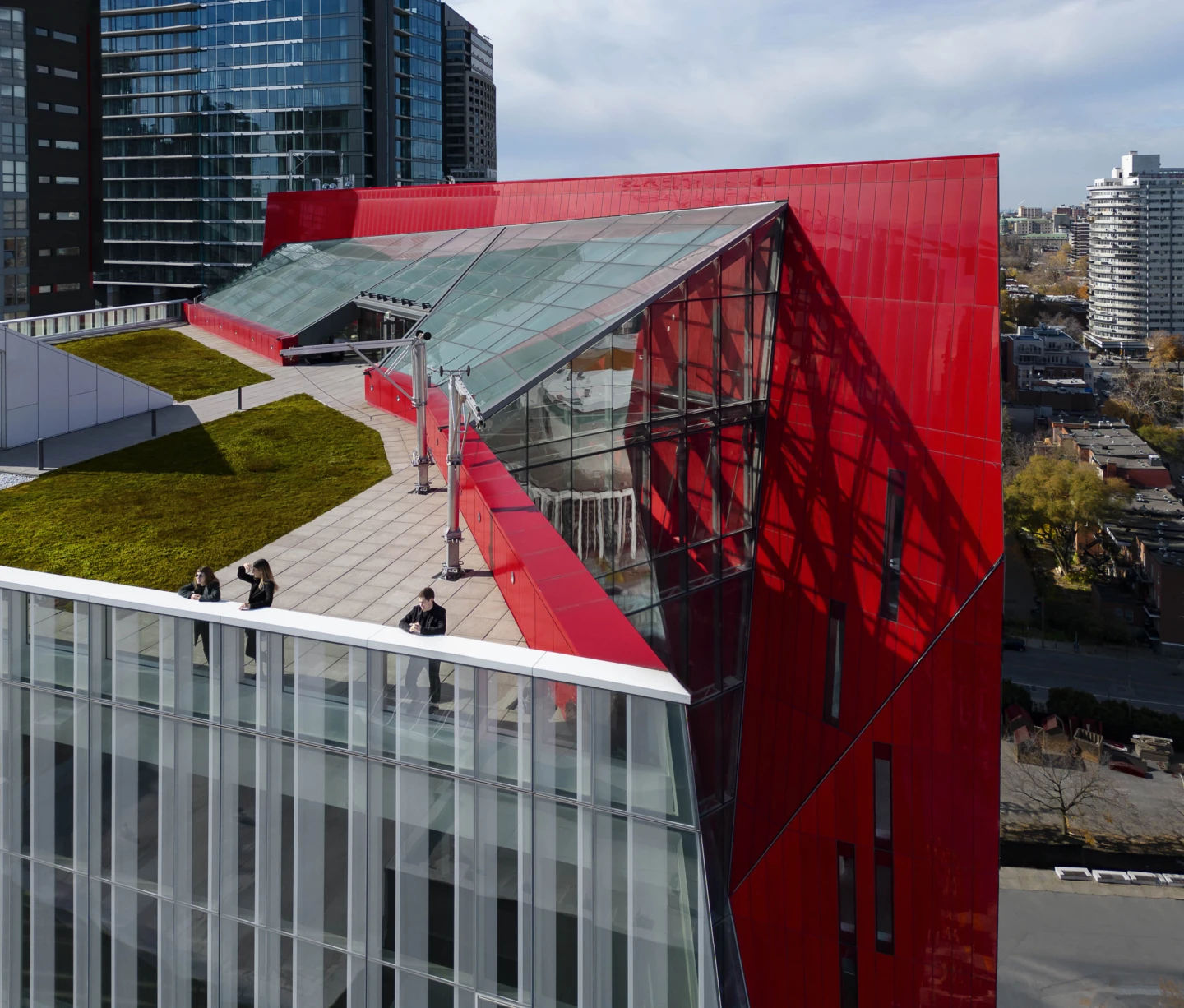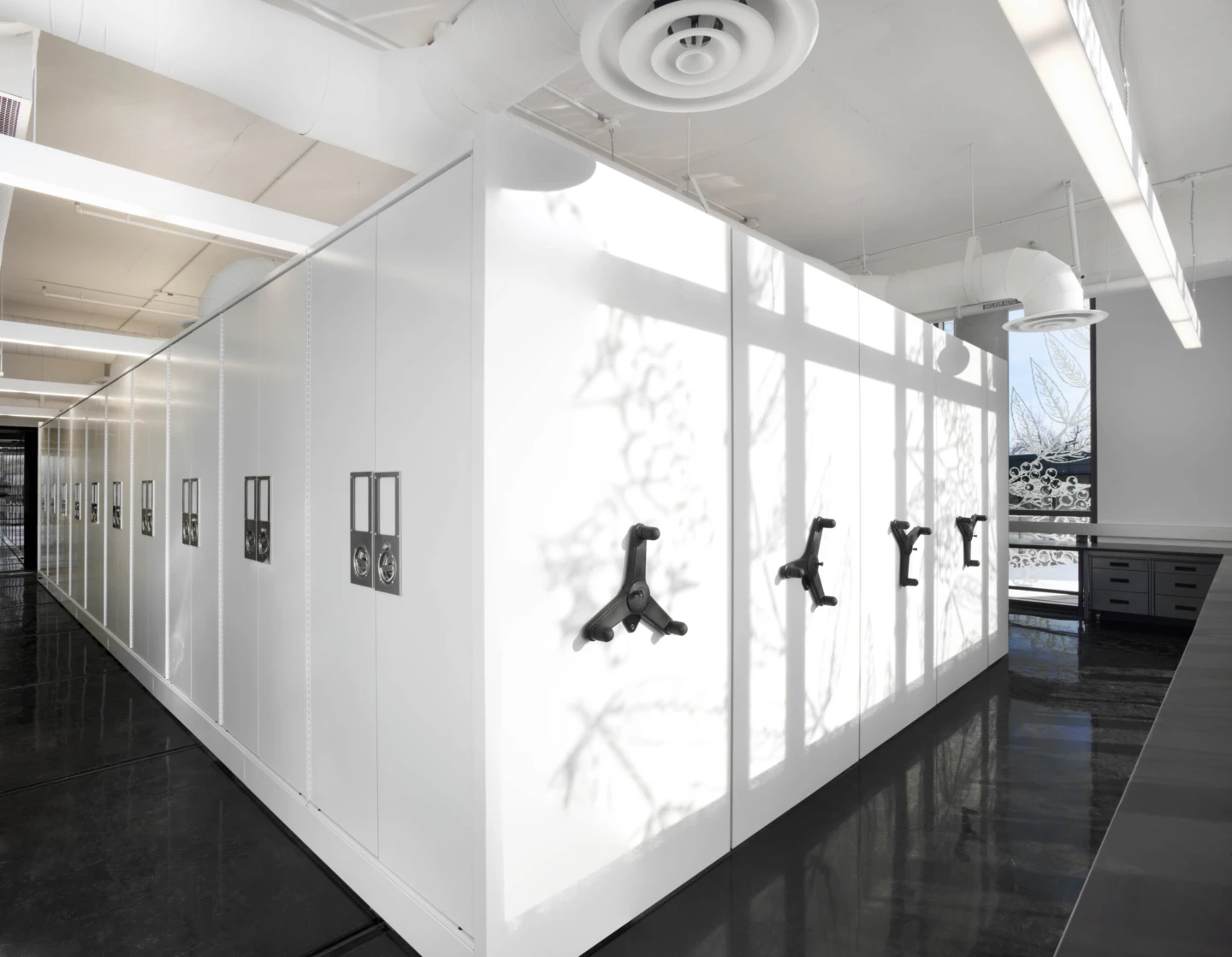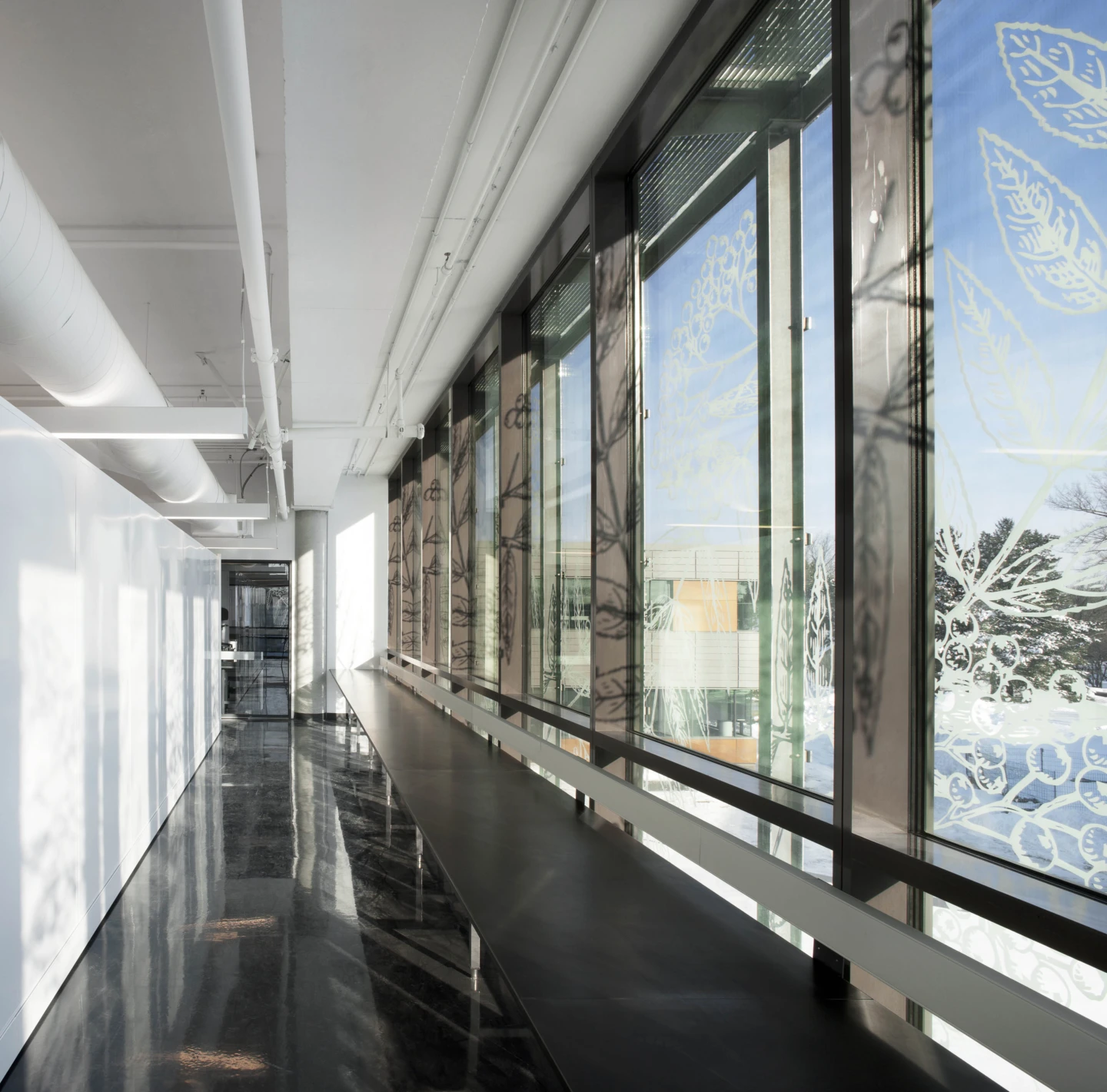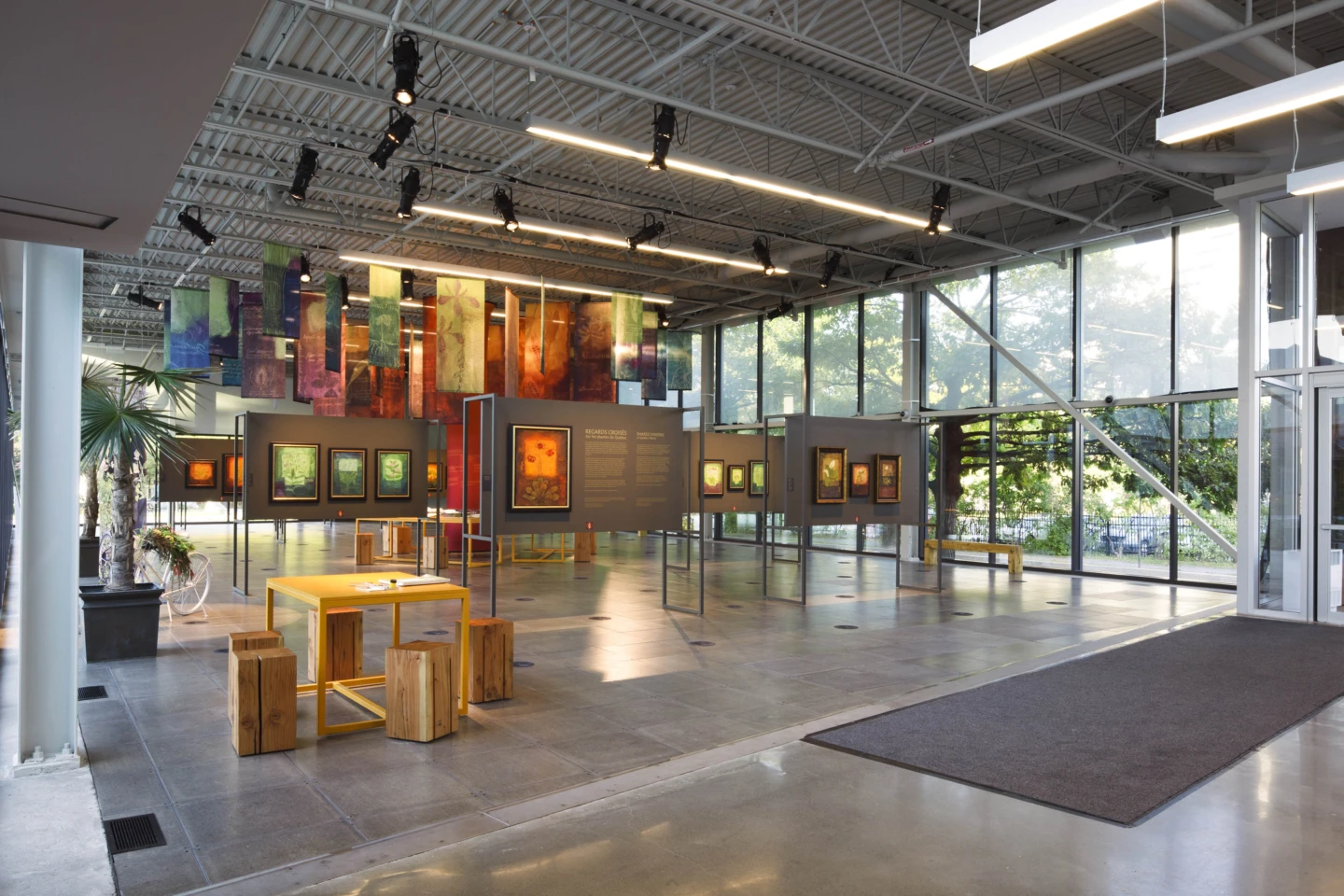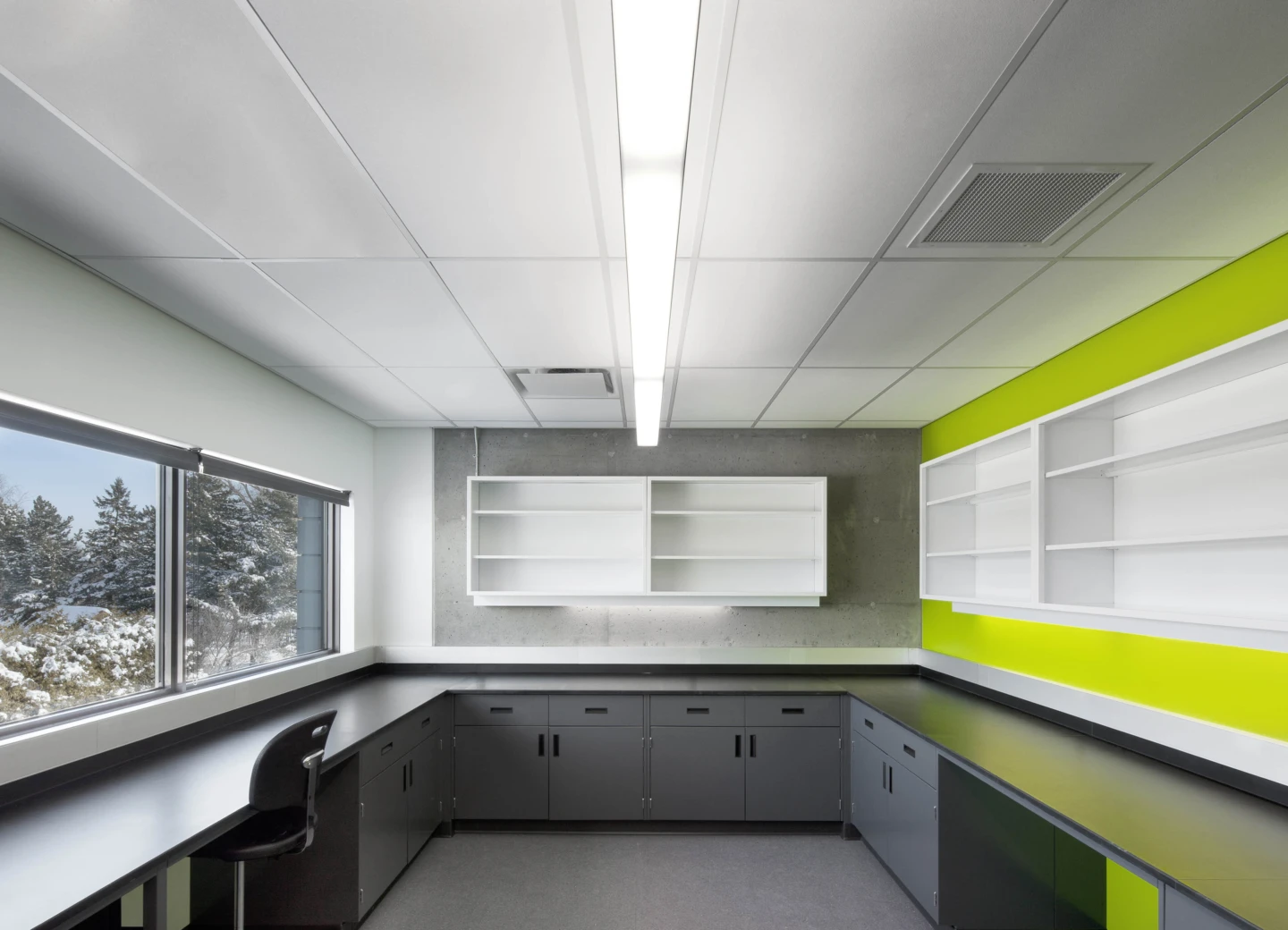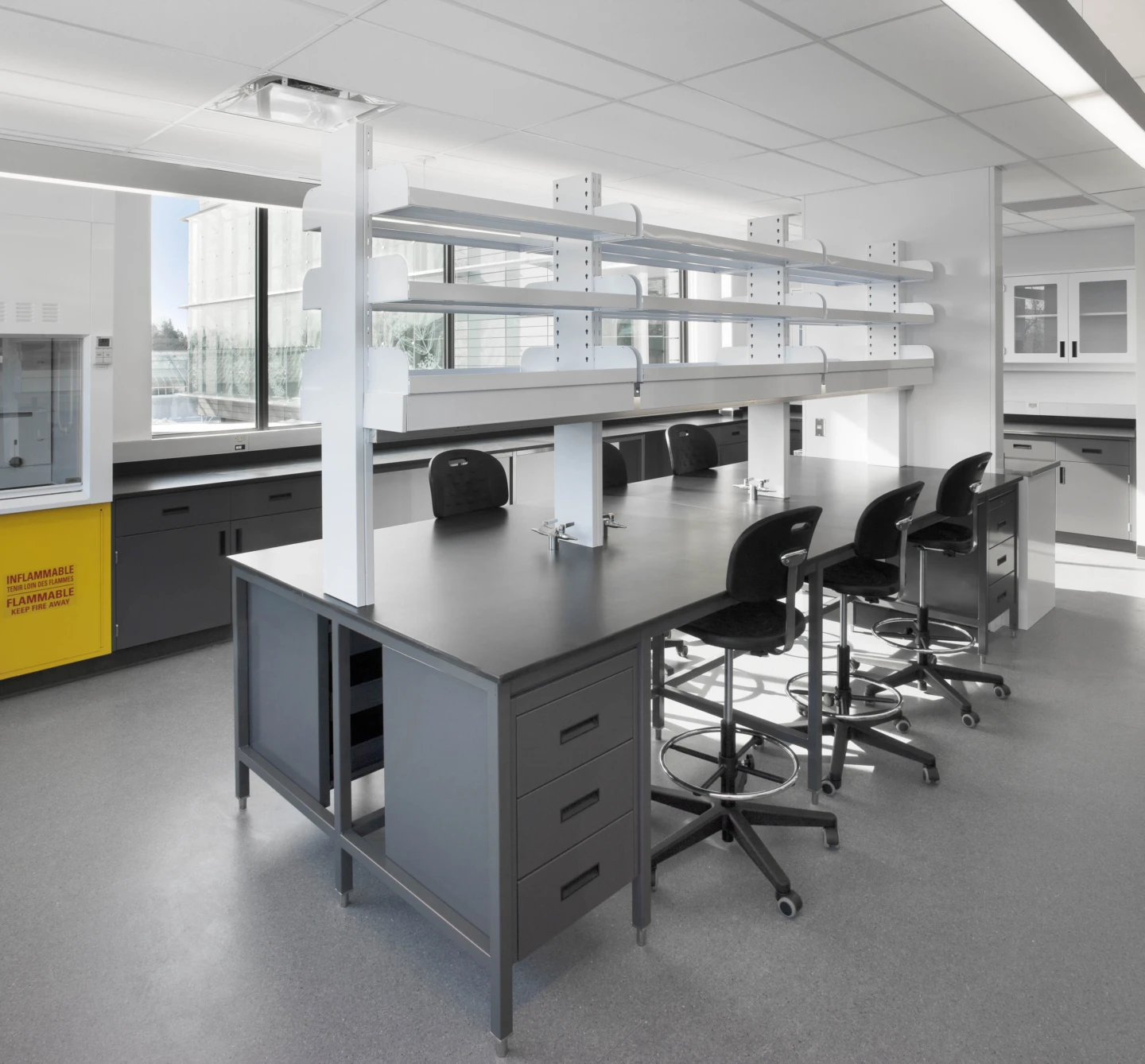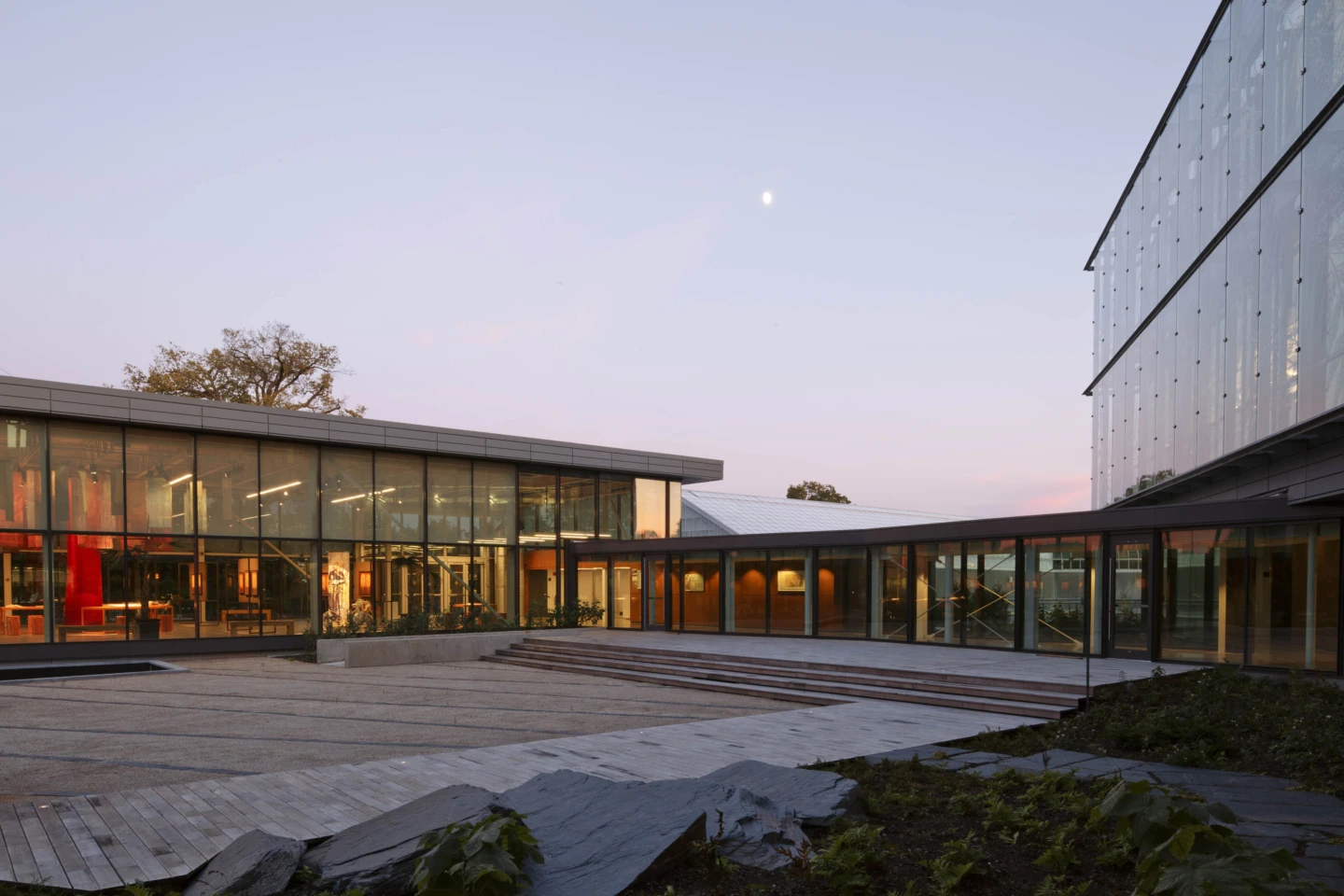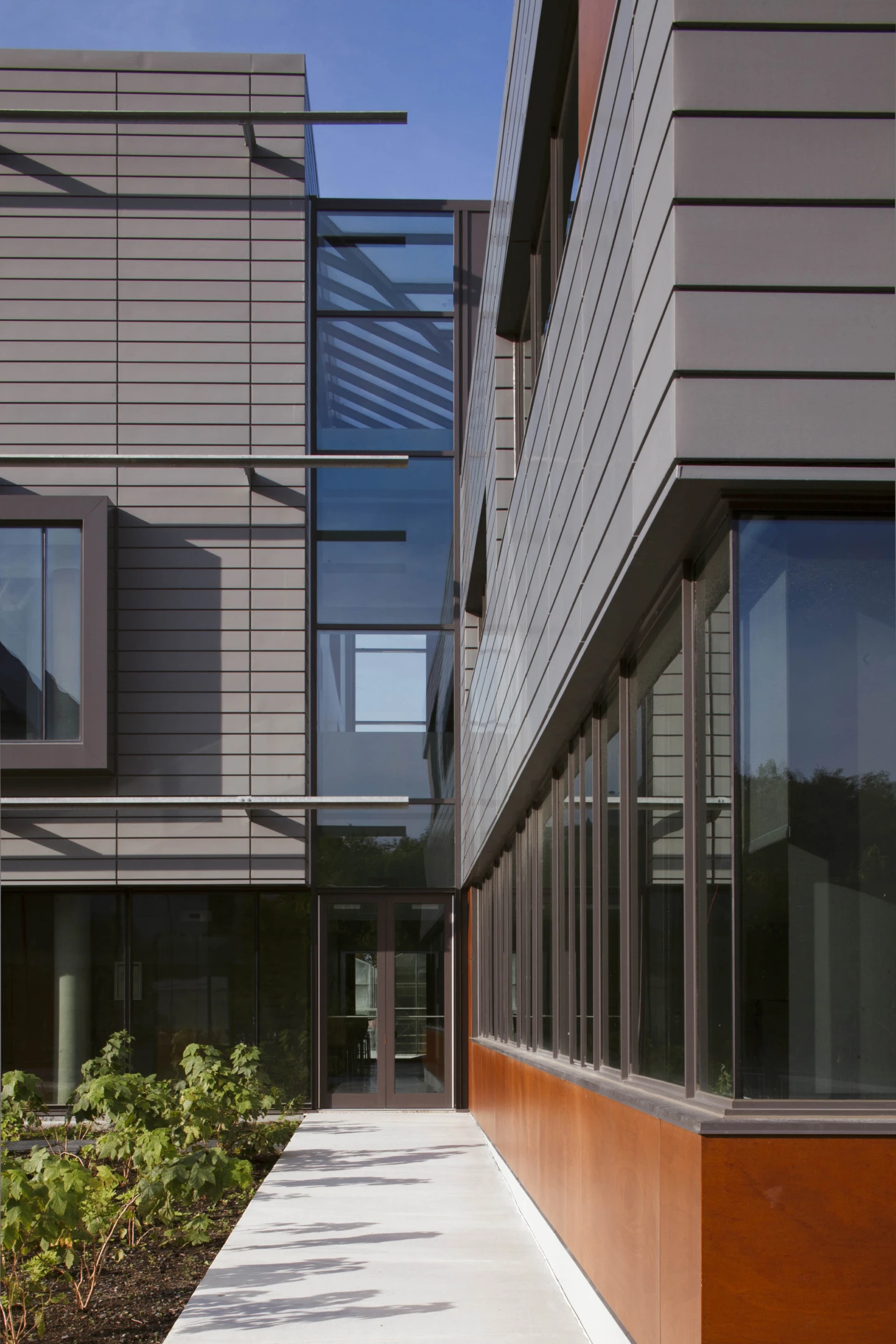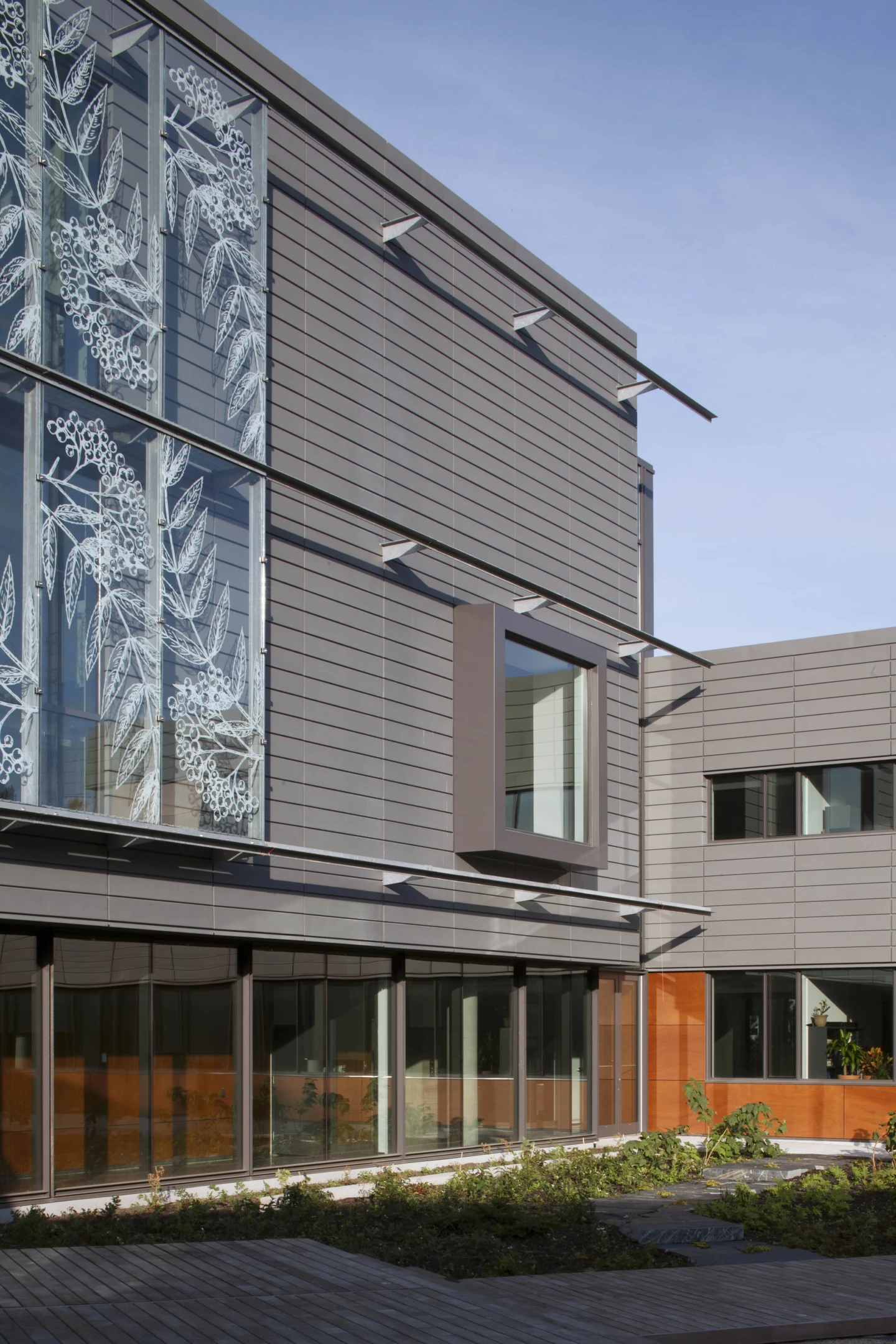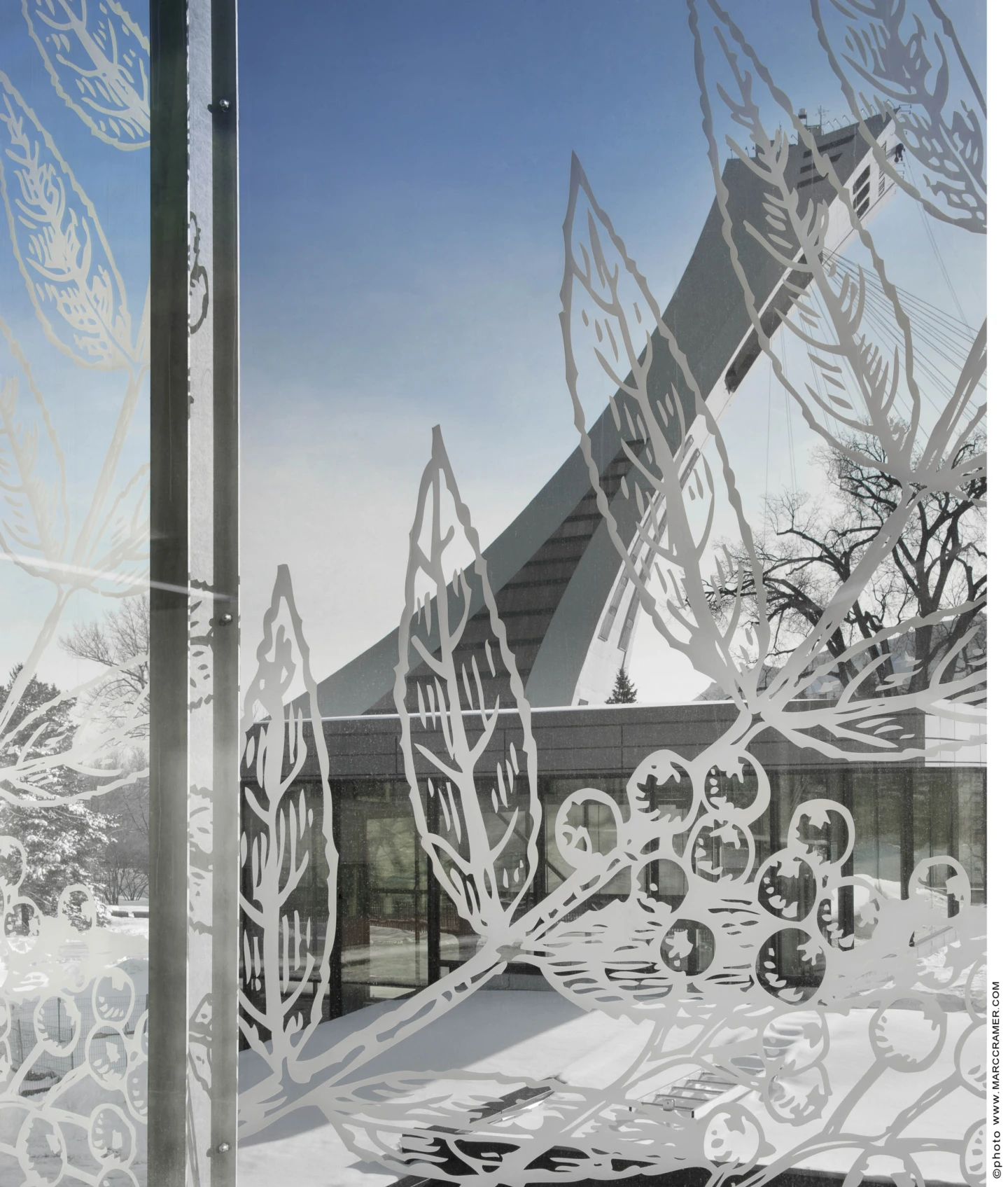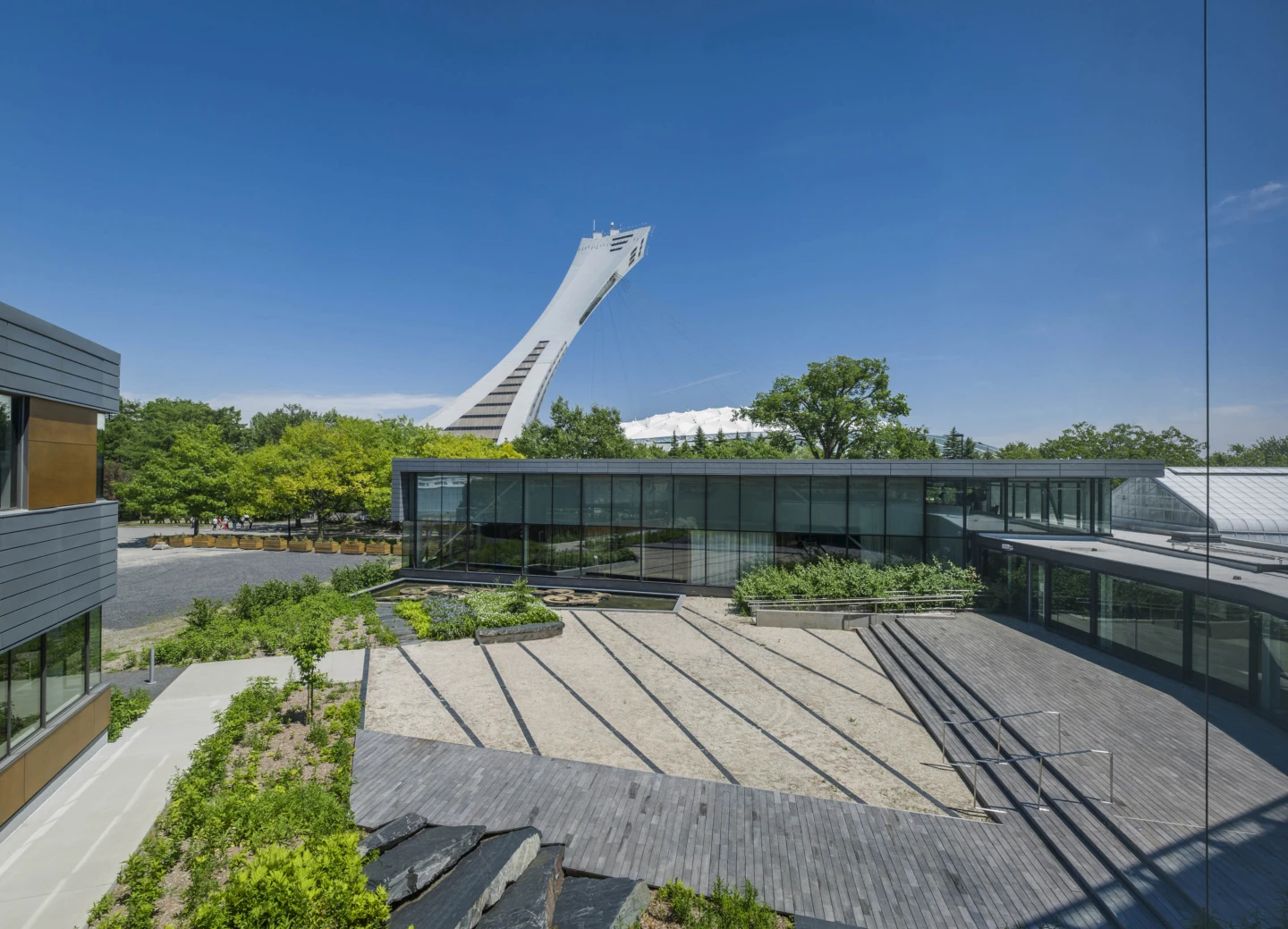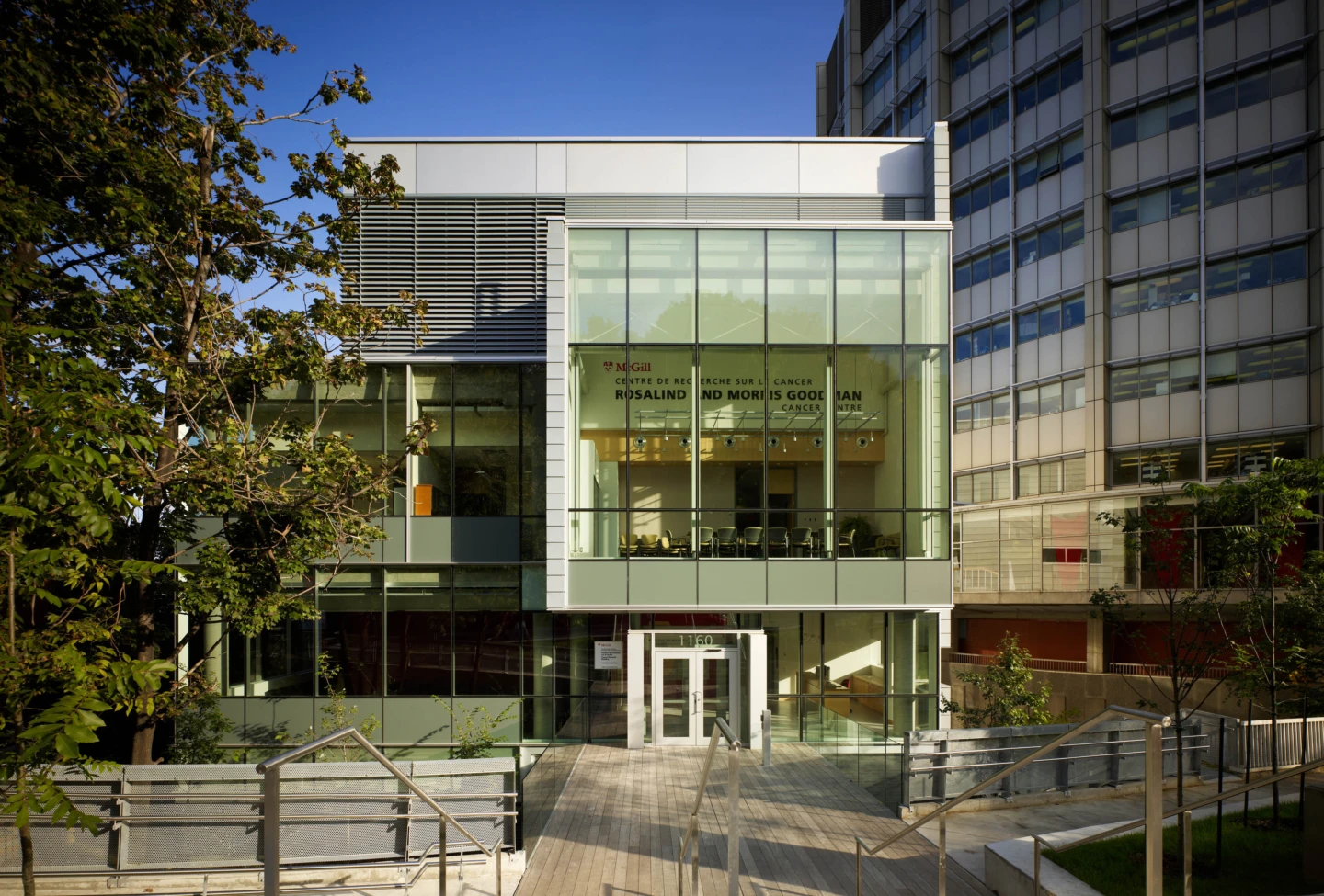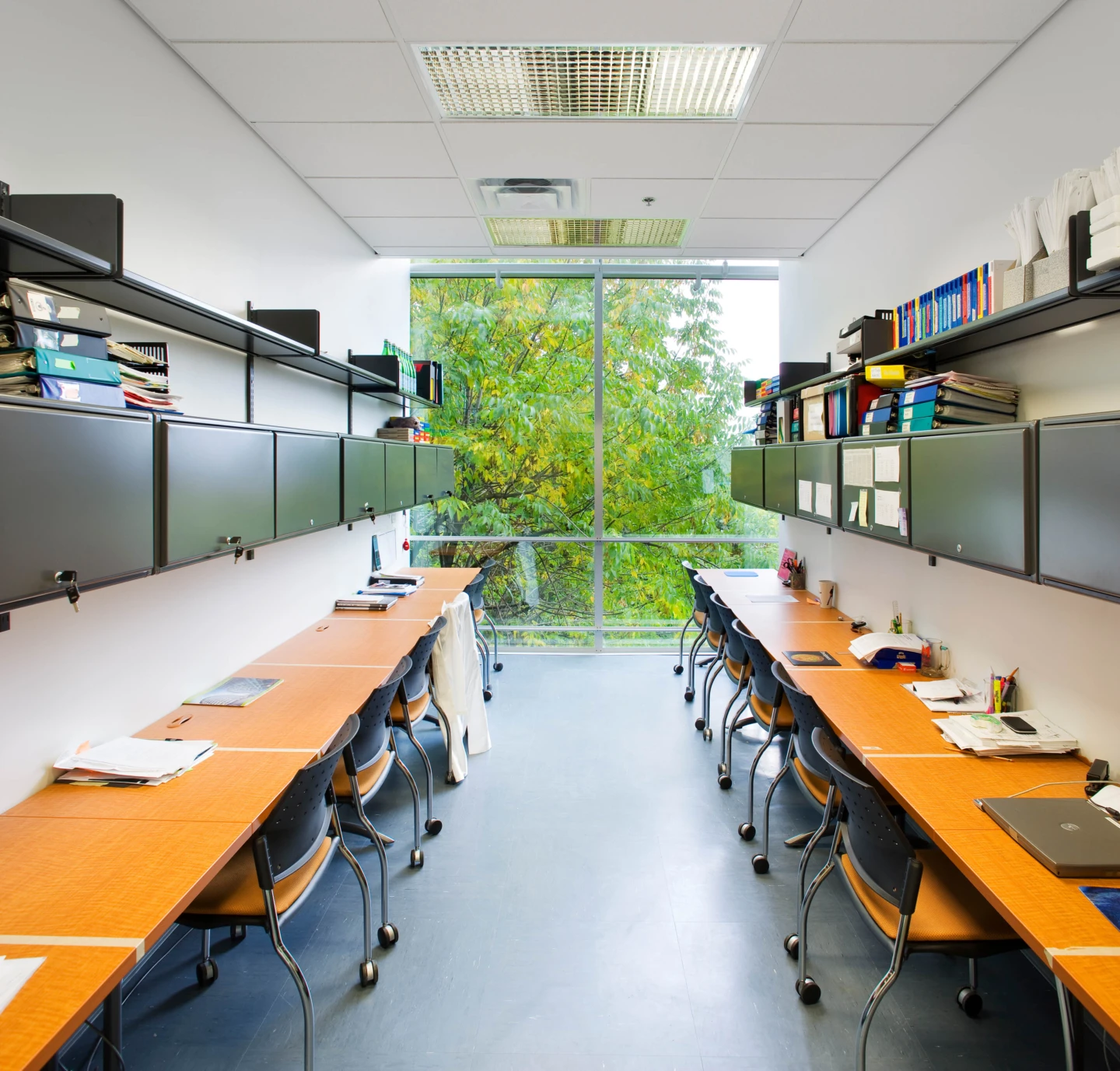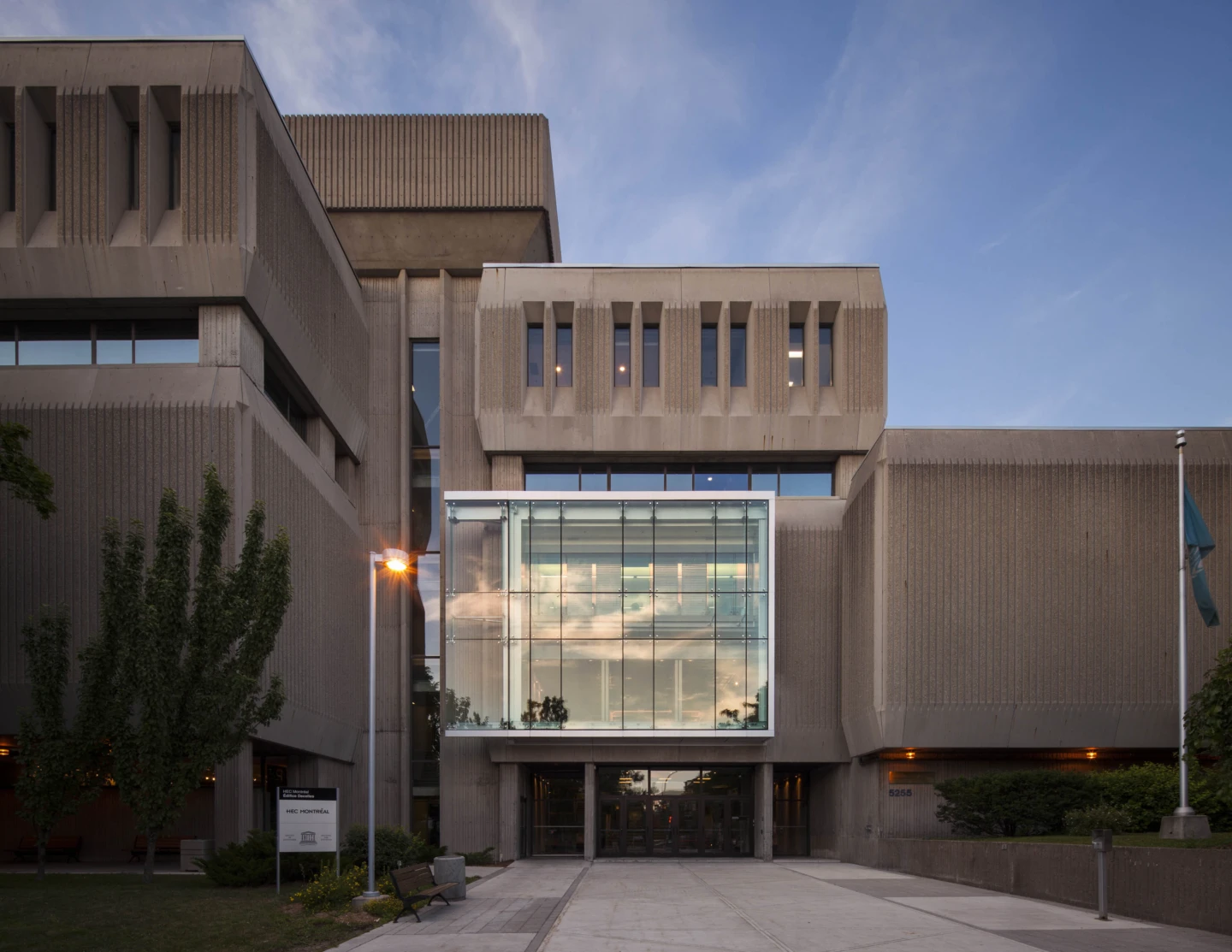- Country Canada
- City Montréal
- Customer Université de Montréal
- Surface area 5,100 m²
- Year 2010
- Certification LEED Gold NC
Located on the Botanical garden’s site, the Biodiversity Centre is a joint project between the University of Montreal’s Arts and Science Faculty and the Institut de recherche en biologie végétale.
This project declined in two key buildings, for a total surface of 5,100 m², is connected by a glazed passageway that forms a central yard. The vegetation praises the biodiversity where the sustainable architecture is essential.
The L-shaped pavilion distributed on four levels, in continuation of the existing greenhouses, offers an exceptional place for the preservation and development of the Marie-Victorin herbarium, the Ouellet-Robert entomological collections, the Botanical garden mycological collections and those of the Insectarium. About forty professors, researchers and students find the most convenient environment for their research and education, for the preservation and for the collections development.
